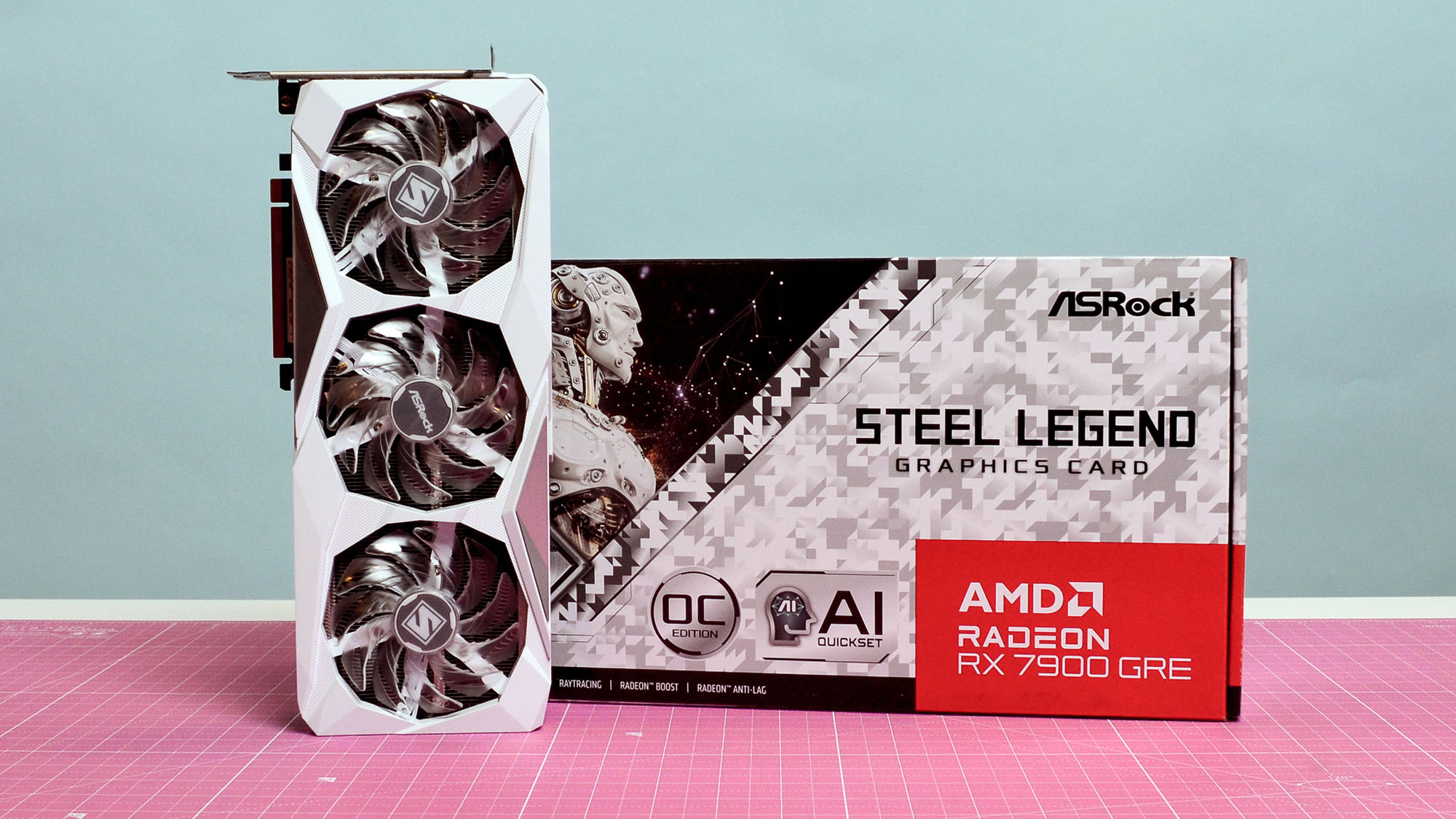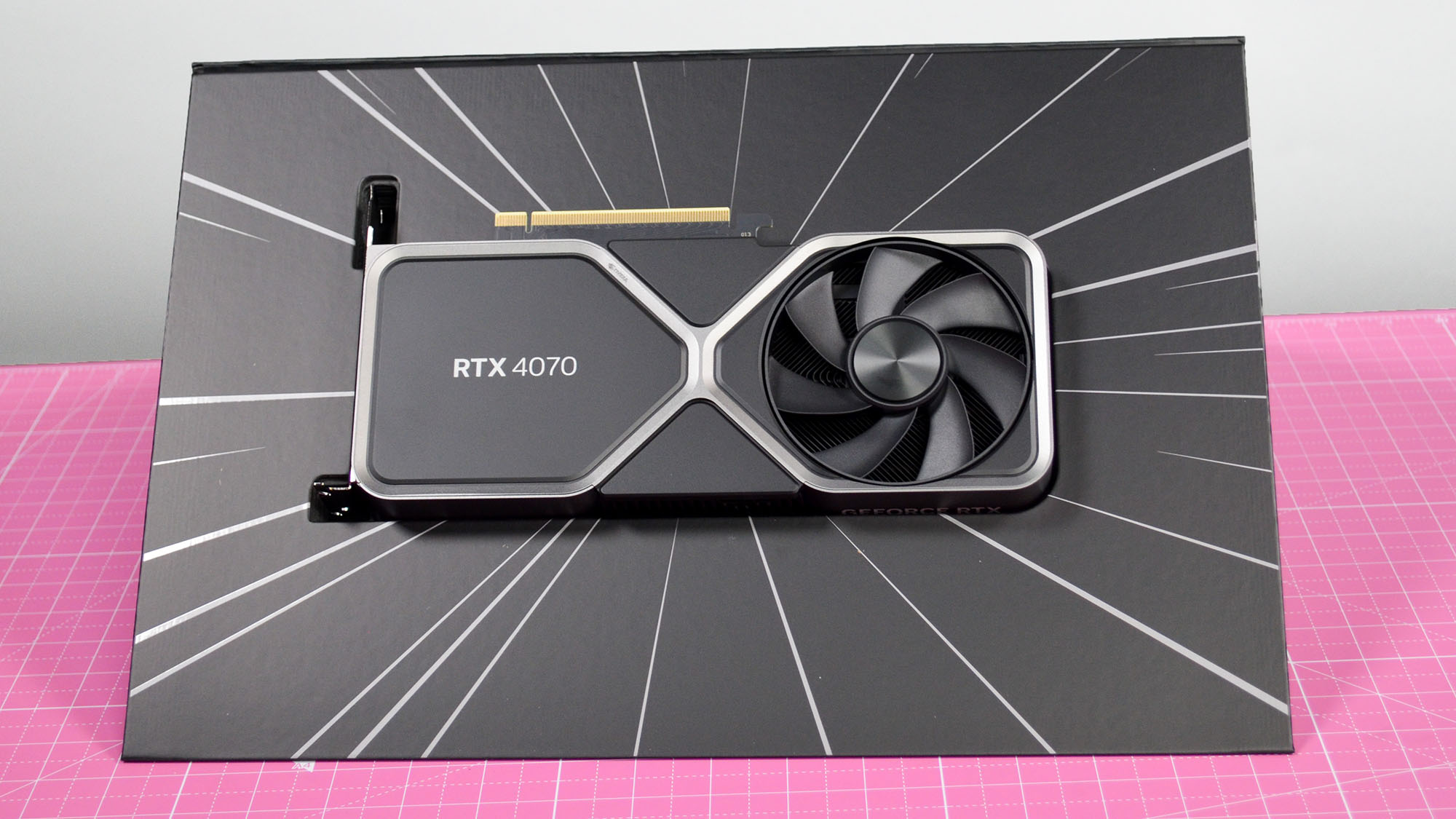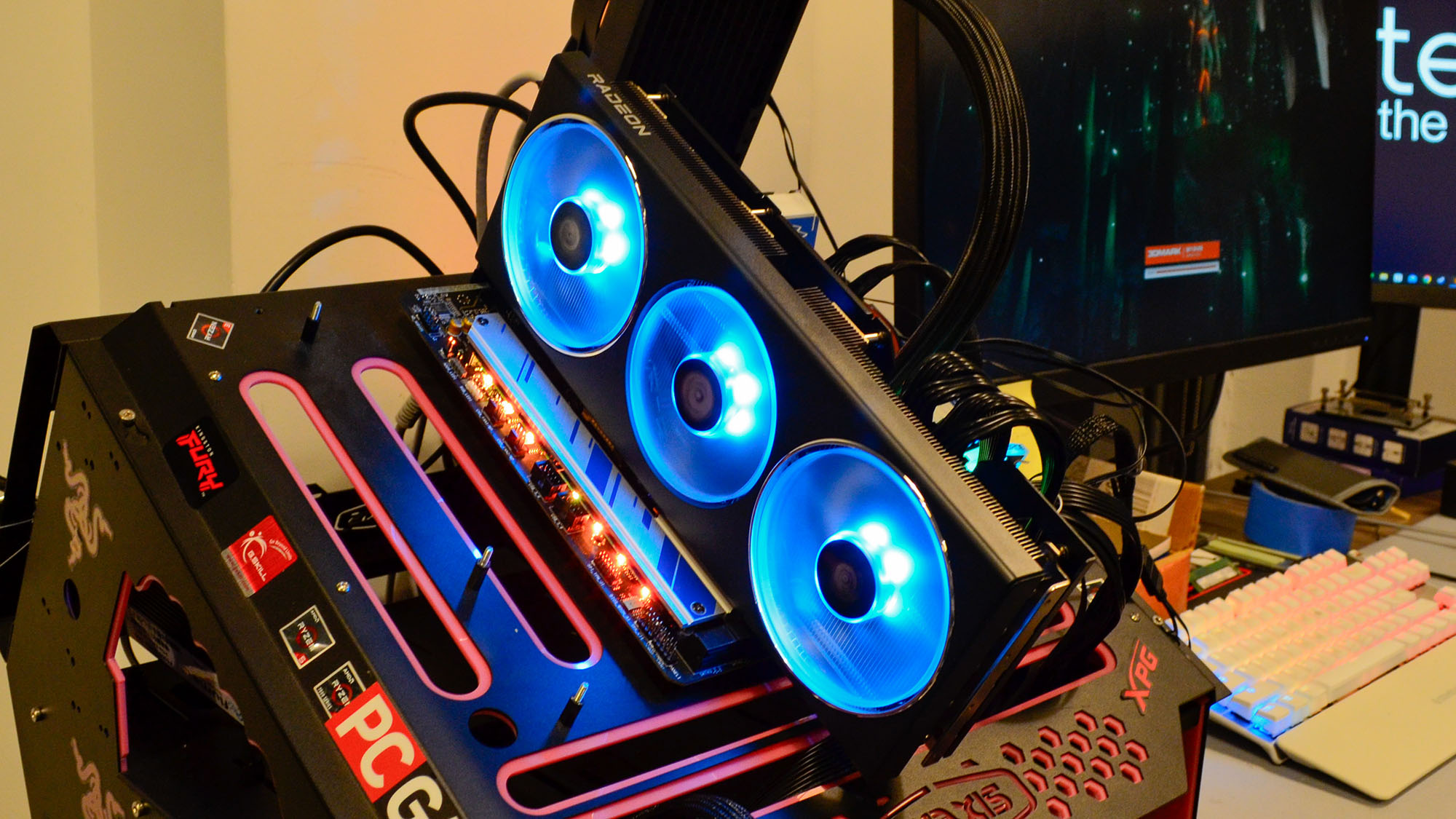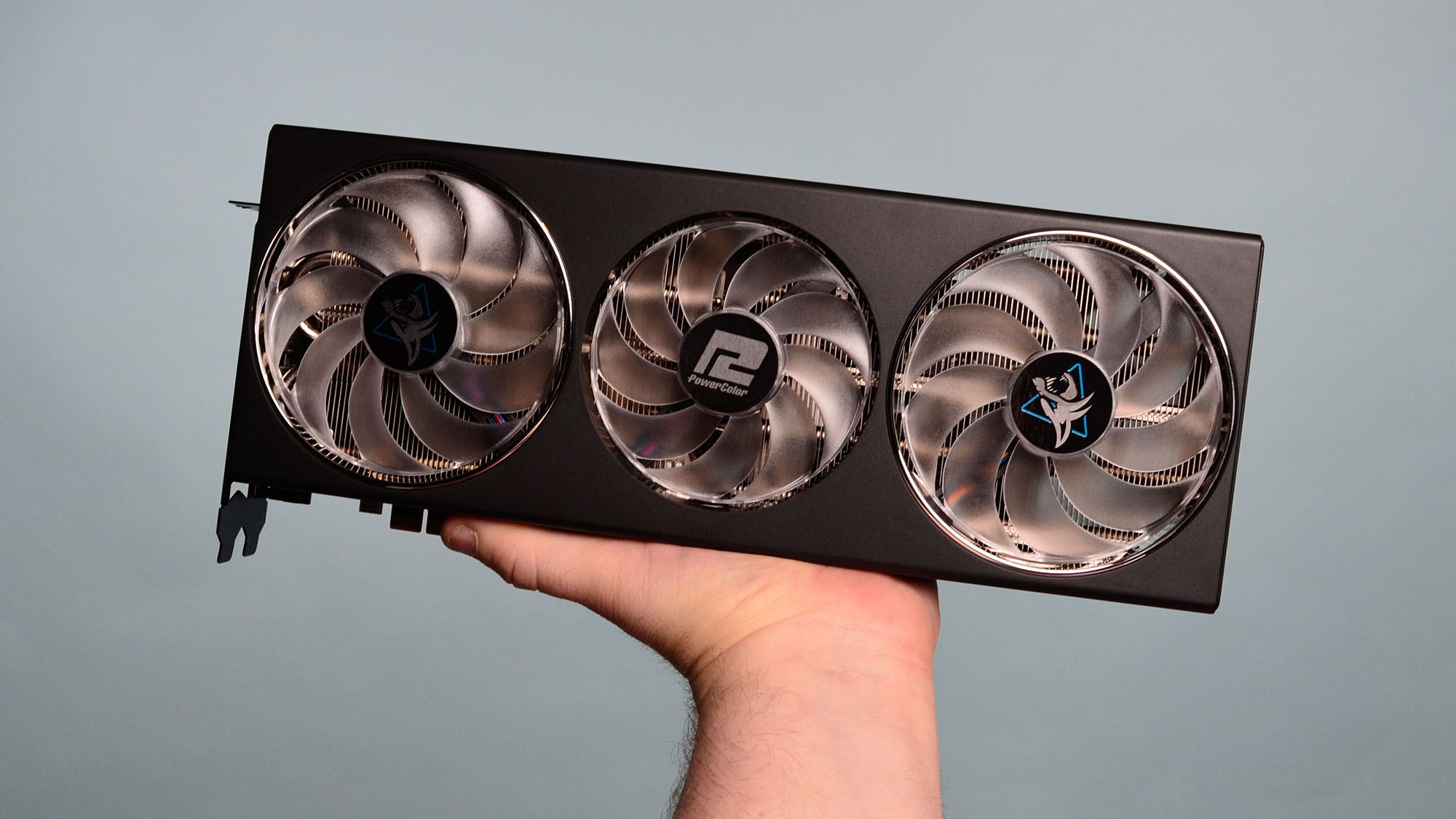AMD RX 7900 GRE vs Nvidia RTX 4070: which mid-range GPU should you buy?
The RX 7900 GRE vs RTX 4070, by the numbers

The time has never been better to consider a new mid-range graphics card now that AMD made its latest GPU available worldwide. Naturally, potential buyers are going to compare the RX 7900 GRE vs RTX 4070, given their close proximity in price, but it's also important to consider what they each offer in terms of performance, features, and overall value for your money.
The AMD Radeon RX 7900 GRE is a curious graphics card, launching in February 2024 after being launched exclusively in China back in June 2023, but it’s now available to the rest of the world and offers phenomenal performance for a far more palatable price tag than many of the best graphics cards on the market right now. With the promise of the Big Navi 31 die and 16GB VRAM under the hood, it even proves itself to be one of the best 4K graphics cards for those who are on a tighter budget but want some of that sweet, sweet 2160p gaming (with appropriate settings tweaks).
The RTX 4070 has had something of a resurgence recently, having been effectively replaced by the RTX 4070 Super back in January of this year. The latter card offered 20% more CUDA cores at the same $599 price point, essentially getting you significantly more performance without the need to splash out. But that release also dropped Nvidia's suggested retail price of the Nvidia RTX 4070 by about 10%, making it an even stronger contender for the title of best 1440p graphics card.
But there's more to it than all that, and while we’re fond of both mid-range GPUs, we wouldn't be TechRadar if we didn't dig deep into our test bench to put each of these fan-favorites to our extensive battery of performance tests to find out which one comes out on top.
RX 7900 GRE vs RTX 4070: Price

When weighing up a mid-range graphics card, the pricing is always paramount. The brand new RX 7900 GRE comes in clutch with an advantage straight out of the gate with its recommended retail price of just $549 / £529.99 / AU$929. In contrast, the RTX 4070 launched at $599 / £589.99 / AU$999 for the Founders Edition model, but has also dropped down to $549 / £529.99 / AU$929 in February.
What’s particularly aggressive about the RX 7900 GRE is how it slots into the current RDNA 3 lineup, being just $50 more than the excellent AMD RX 7800 XT from last year. In comparison, the RTX 4070 is quite the jump up from its sibling, the Nvidia RTX 4060 Ti, which starts at $399 in the US.
On price alone, then, this would appear to be a tie between the RX 7900 GRE vs RTX 4070, but price isn't the same thing as value, and in the case of the RX 7900 GRE, it's overall performance-to-price ratio after our testing reveals that it gives you more for that investment, giving it the decisive edge here.
Sign up for breaking news, reviews, opinion, top tech deals, and more.
- Winner: AMD Radeon RX 7900 GRE
RX 7900 GRE vs RTX 4070: Specs

AMD’s RX 7900 GRE immediately stands out as a mid-range GPU by offering 16GB GDDR6 VRAM on a 256-bit memory bus. It’s built on the AMD Navi 31 die with a total of 5,120 Stream Processors. By comparison, the RTX 4070 is built on the AD104 die with a total of 5,888 CUDA cores and 12GB GDDR6X memory on a 192-bit memory bus.
There we see the immediate architectural differences between mid-range RDNA 3 and Ada respectively. The former opts for a larger memory bus with a higher amount of slower memory, compared to the latter’s lower memory pool that’s considerably quicker. Despite their differences, the two models are remarkably close in total bandwidth available with the GRE boosting 576 GB/sec to the RTX 4070’s 504.2 GB/sec.
That slight lead in bandwidth comes at the price of increased power draw, however. That’s because the 7900 GRE has a 260W TDP compared to the 4070’s 200W TDP, for a difference of 30%. Ada’s architecture is therefore considerably more efficient than its rival. With that said, the red corner wins favor by fitting its latest GPU out with the standard two 8-pin PCIe connectors with no need for the likes of a 16-pin adapter, though.
The design languages of both are similar at base level. The 7900 GRE and 4070 are both dual-slot GPUs which means they should be ideal for a smaller form factor mini-ITX build just as much as a wider tower.
It’s worth noting that the GRE uses the same chip as the AMD RX 7900 XT and AMD RX 7900 XTX, just with substantially less VRAM and a smaller memory bus to utilize, and the memory interface matches that of the RX 7800 XT, even with slightly slower memory speed. It’s interesting to see how Team Red has effectively repurposed the Navi 31 silicon for a value play, though.
In the end, then, AMD’s offering has more VRAM, a larger memory bus, and a higher bandwidth for less money, so for that reason, we’re giving Team Red the edge here.
- Winner: AMD Radeon RX 7900 GRE
RX 7900 GRE vs RTX 4070: Performance

It all comes down to performance as to whether you should invest in either an RX 7900 GRE or the RTX 4070, and here we've done an unhealthy amount of benchmarking and testing on these two cards and collected reams of data to help highlight what you can expect from each. Measuring their general performance using synthetic benchmarks, some things become pretty clear right out the gate.
The lead taken by the RX 7900 GRE extends into our industry-standard synthetic benchmarks as well.
Taking 3DMark Sky Diver and Fire Strike Extreme as prime examples, AMD’s GPU achieved scores of 169,170 and 27,595 when compared to Nvidia’s offering of 120,719 and 20,457, trailing behind by quite a significant margin.
This is also true with the ray tracing-focused Port Royal with the RX 7900 GRE scoring 11,768 against the RTX 4070’s 10,415. The RTX 4070 does manage to score well ahead of the RX 7900 GRE when it comes to raw compute performance though, so data scientists and ML researchers are going to want to opt for the Nvidia RTX card.
Where we deviate from the script somewhat is with creative workloads where the Nvidia GPU pulls out some very solid wins.
This is most evident in Blender 4.0 with the Monster, Junkshop, and Classroom benchmarks with respective scores of 2,657, 1,267, and 1,332. There’s no other way to phrase this, the GRE just can’t match the output with scores of 1,252, 623, and 618, respectively.
In Adobe Photoshop, AMD does manage a better showing, with the RX 7900 GRE beating the RTX 4070 in the PugetBench for Creators 1.0 Photoshop benchmark, 10,650 to 9,695, though the RTX 4070 beats the RX 7900 GRE in Adobe Premiere, getting a score of 12,317 to the RX 7900 GRE's 11,200 in PugetBench. The RX 7900 GRE also manages to encode 4K video into 1080p about 10 FPS faster than the RTX 4070, though both still perform exceptionally well in this test.
But these are really gaming graphics cards at the end of the day, and putting the RX 7900 GRE vs RTX 4070 across several gaming benchmarks really did surprise us.
These cards have more than enough resources to game well above 1080p, but for those who might be using older monitors or might want to bring things down to full HD to take advantage of faster frame rates will have a lot to like about both cards, but the RX 7900 GRE still comes out well ahead of the RTX 4070.
In Cyberpunk 2077 at max settings without RT or upscaling enabled, the RX 7900 GRE manages to pull out a blazing fast 151 FPS compared to the RTX 4070's 97 FPS, a difference of about 55% in the RX 7900 GRE's favor. The RX 7900 GRE is even able to match the RTX 4070's ray-tracing performance in Cyberpunk 2077 (both scoring 46 FPS with Psycho RT on Ultra quality), though notably, the RX 7900 GRE's minimum FPS is nearly twice that of the RTX 4070's, so you'll get much smoother gameplay overall.
In total, the RX 7900 GRE averages about 111 FPS at 1080p, compared to the RTX 4070's 82 FPS, a difference of about 35% in the RX 7900 GRE's favor.
Starting with AMD’s latest offering, the RX 7900 GRE was able to achieve 60 FPS average in Metro Exodus with Extreme settings, as well as 102 FPS average in Cyberpunk 2077 at Ultra. Impressively, this streak continued in Returnal with 121 FPS average at Epic settings, and Tiny Tina’s Wonderland at 116 FPS on Badass.
The RTX 4070 is no slouch either. The mid-range Ada also got an average of 60 FPS in Metro Exodus on the Extreme preset but just 65 FPS in Cyberpunk 2077 when set to Ultra. Scores are similar with Returnal and Tiny Tina’s Wonderland, with averages of 88 FPS and 97 FPS, falling just short of what the RX 7900 GRE was able to output. This is likely due to the smaller memory pool available.
Neither card flourishes in 4K, sadly, so if you’re considering either GPU you’ll want to keep things locked to QHD for the most part.
Looking at Metro: Exodus, you’re going to get around half the framerate with the GRE pulling in only 35 FPS; playable, but far from ideal. It’s a similar story with Cyberpunk 2077 with the RX 7900 GRE scoring 43 FPS on average. Returnal fared better with 68 FPS on average and Tiny Tina’s Wonderland keeping rock solid at 60 FPS. Playing at 2160p is possible with the RX 7900 GRE, but your results will be less consistent unless you tinker with the settings some.
The RTX 4070 falls well short of the RX 7900 GRE at 4K. You’re looking at quite the reduction in Metro: Exodus and Cyberpunk 2077 with an average of just 29 FPS apiece, falling just short of playability. Returnal does a bit better at 51 FPS but is well behind the 4K@60+ offered by the RX 7900 GRE. Tiny Tina’s Wonderland also lags behind with 50 FPS - a full 10 FPS deficit - or about 18% slower.
In the end, its not really all that close, with the RX 7900 GRE outperforming the RTX 4070 across all but a few benchmarks, and it only gets soundly beaten in Blender 4.0 3D rendering, a test that Nvidia has a natural advantage thanks to it being tied so heavily to Nvidia's CUDA graphics language.
Other than that, though, the RX 7900 GRE scores nearly 27% better than the RTX 4070, which is incredible considering that they are both the same price. In Nvidia's favor though, it's taking a lot of power for the RX 7900 GRE to pull this off, so if efficiency and sustainability are important to you, the Nvidia RTX 4070 gets a lot of performance with much lower power.
- Winner: AMD Radeon RX 7900 GRE
Which one should you buy?

Which GPU you should buy will ultimately come down to your needs.
If you primarily want a mid-range graphics card for gaming first and foremost, then you’re going to be better served by the AMD RX 7900 GRE. AMD’s card performs better and more consistently in 1080p, 1440p, and even 4K.
However, if gaming is more of a secondary activity and you want a graphics card for creativity and productivity then there’s a case to be made for the RTX 4070 here. If you're looking to get into 3D modeling on the (relative) cheap, Nvidia's midrange card can get you a lot farther than AMD's, but this is honestly a very narrow advantage, and most people are going to want to get the RX 7900 GRE. Considering there's no difference in price between the two, it's an easy call to make on this one.
- Winner: AMD Radeon RX 7900 GRE

Formerly TechRadar Gaming's Hardware Editor, Aleksha McLoughlin is now a freelance writer and editor specializing in computing tech, video games, and E-commerce. As well as her many contributions to this site, you'll also find her work available on sister sites such as PC Gamer, GamesRadar, and Android Central. Additionally, more of her bylines can be found on Trusted Reviews, Dexerto, Expert Reviews, Techopedia, PC Guide, VideoGamer, and more.
- John LoefflerComponents Editor